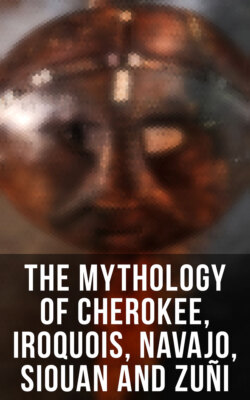Читать книгу The Mythology of Cherokee, Iroquois, Navajo, Siouan and Zuñi - James Mooney - Страница 51
На сайте Литреса книга снята с продажи.
The Indian Wife and Mother
ОглавлениеThe position of women among the North American Indians is distinctly favourable, when the general circumstances of their environment are considered. As with most barbarian people, the main burden of the work of the community falls upon them. But in most cases the bulk of the food-supply is provided by the men, who have often to face long and arduous hunting expeditions in the search for provender. The labour of planting and digging seed, of hoeing, harvesting, and storing crops, is invariably borne by the women. In the more accessible Indian territory of North America, however, the practice of agriculture is falling into desuetude, and the aborigines are becoming accustomed to rely to a great extent on a supply of cereals from outside sources.
In the art of weaving Indian women were and are extremely skilful. In the southern regions the Hopi women have woven cotton garments from time immemorial.
Among the various tribes the institution of marriage greatly depends for its circumstances upon the system of totemism, a custom which will be found fully described in the chapter which deals with the mythology of the Red Race. This system places a taboo upon marriages between members of the same clan or other division of a tribe. The nature of the ceremony itself differs with locality and race. Among the Plains Indians polygamy was common, and the essential feature of the ceremony was the presentation of gifts to the bride's father. In some tribes the husband had absolute power, and separation and divorce were common. But other Plains people were free from the purchase system, and the wishes of their women were consulted. East of the Mississippi the Iroquoian, Algonquian (except in the north and west), and Muskhogean tribes retained descent of name and property in the female line. Exchange of gifts preceded marriage with these peoples. Among the Hurons a council of mothers arranged the unions of the members of the tribe. Monogamy, on the whole, prevailed throughout the continent; and, generally speaking, the marriage bond was regarded rather loosely.
